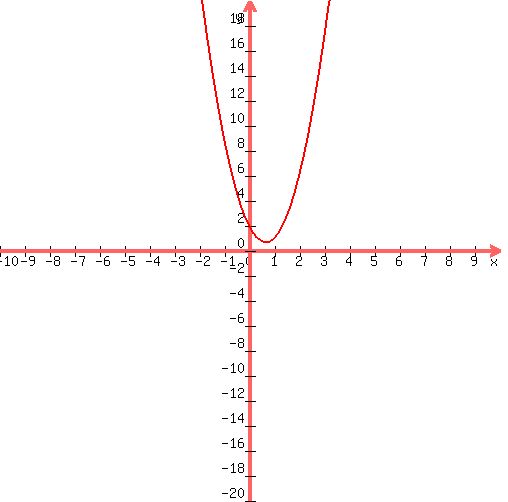Question 980552: Solve this equation by completing the square.
3x^2 - 4x = -2
Answer by richwmiller(17219)   (Show Source): (Show Source):
You can put this solution on YOUR website!
| Solved by pluggable solver: COMPLETING THE SQUARE solver for quadratics |
Read this lesson on completing the square by prince_abubu, if you do not know how to complete the square.
Let's convert  to standard form by dividing both sides by 3: to standard form by dividing both sides by 3:
We have:  .
What we want to do now is to change this equation to a complete square .
What we want to do now is to change this equation to a complete square  . How can we find out values of somenumber and othernumber that would make it work? . How can we find out values of somenumber and othernumber that would make it work?
Look at  : :  . Since the coefficient in our equation . Since the coefficient in our equation  that goes in front of x is -1.33333333333333, we know that -1.33333333333333=2*somenumber, or that goes in front of x is -1.33333333333333, we know that -1.33333333333333=2*somenumber, or  . So, we know that our equation can be rewritten as . So, we know that our equation can be rewritten as  , and we do not yet know the other number. , and we do not yet know the other number.
We are almost there. Finding the other number is simply a matter of not making too many mistakes. We need to find 'other number' such that  is equivalent to our original equation is equivalent to our original equation  . .

The highlighted red part must be equal to 0.666666666666667 (highlighted green part).
 , or , or  . .
So, the equation converts to  , or , or  . .
Our equation converted to a square  , equated to a number (-0.222222222222222). , equated to a number (-0.222222222222222).
There is no number whose square can be negative. So, there is no solution to this equation |
| Solved by pluggable solver: SOLVE quadratic equation with variable |
Quadratic equation  (in our case (in our case  ) has the following solutons: ) has the following solutons:

For these solutions to exist, the discriminant  should not be a negative number. should not be a negative number.
First, we need to compute the discriminant  : :  . .
The discriminant -8 is less than zero. That means that there are no solutions among real numbers.
If you are a student of advanced school algebra and are aware about imaginary numbers, read on.
In the field of imaginary numbers, the square root of -8 is + or -  . .
The solution is 
Here's your graph:
 |
|
|
|